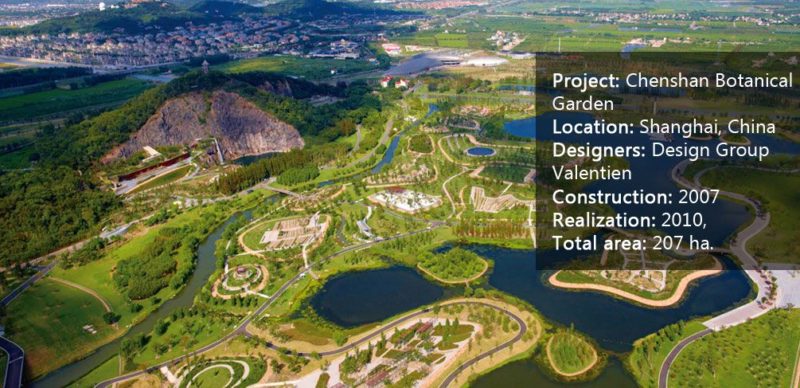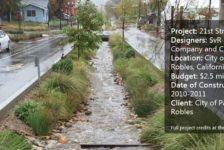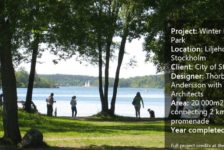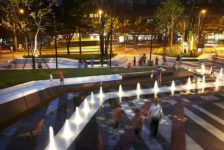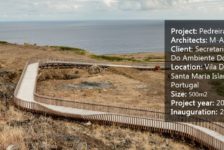Article by Miriam Judith González Bolívar We look at how to reduce vehicular impact in the development of the Village Centre project, by Alles Wird Gut, in Innichen, Italy Converting streets into pedestrian zones has become very popular. With the necessity of being more sustainable while taking note that walking is elemental for mobility, it’s an alternative transportation model that helps with climate change and certainly has health benefits. Nowadays, with motorized evolution, these places have been invaded by vehicles, reducing spaces for recreation, service areas, commerce, etc. The influx of transportation has become one of the biggest enemies to the cities. But wouldn’t it be nice to take back pedestrian areas in our cities? A great place to start is in the hearts of our cities.
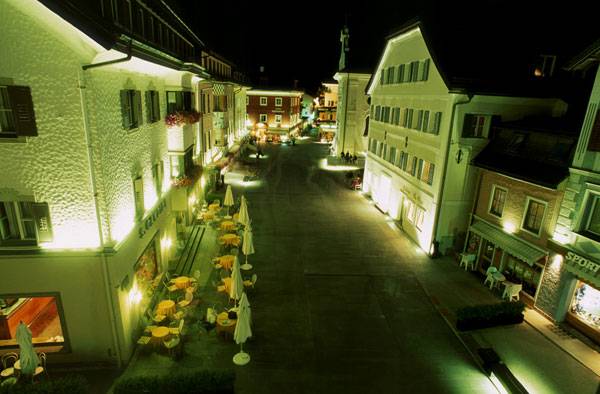
The development of the village centre in Innichen, Italy. Photo courtesy of Alles Wird Gut
Reduce Vehicular Impact
A good example of this is the village of San Candido, located in the natural preserve of Dolomiti di Sesto, a small commune in Italy next to the border with Austria, declared a Natural Heritage Site by UNESCO. It’s one of the favorite destinations for hiking and climbing lovers in summer and a paradise for skiers, lugers, and snowboarders in winter, when the mountains are covered in snow.
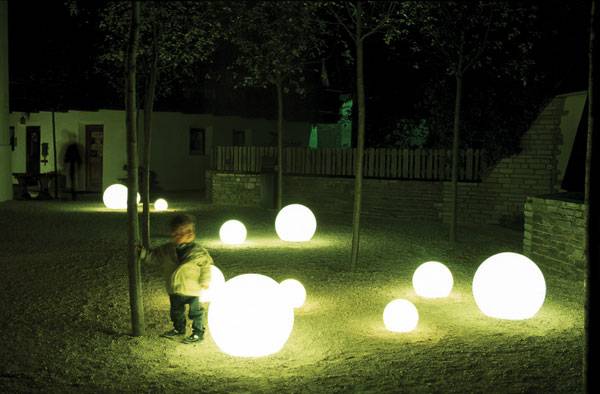
The development of the village centre in Innichen, Italy. Photo courtesy of Alles Wird Gut
The Austrian architects,
Alles Wird Gut, won first place in the competition to redesign the old city center into a free-traffic shopping mall. As San Candido is a very small commune, with a low rate of population (3,175 in 2010), only in peak tourism seasons is it full of people. Contrary to this, in spring and autumn, the old city center is a completely deserted zone. The conversion of the streets into pedestrian-only zones is a dynamic function in response to the fluctuation of tourist season, reducing the transit hassles to a minimum.
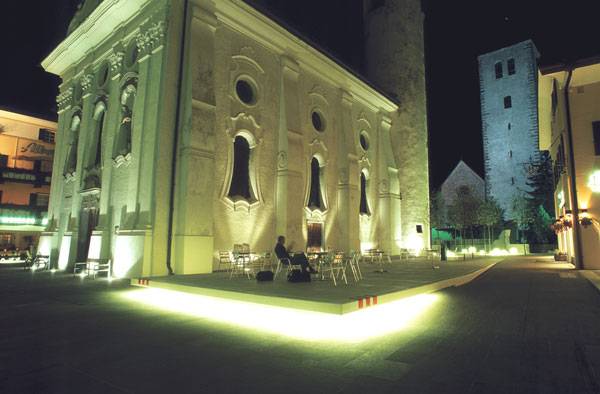
The development of the village centre in Innichen, Italy. Photo courtesy of Alles Wird Gut
Designing a place of comfort that gives a new aspect to the village, tourists and locals are able to walk to shopping malls, restaurants, bars, hotels, newsstands, and open air markets, etc. The project is emphasized by five layers
- Basis
- Morphology
- Platforms
- Reactive
- Green
Basis Layer This is the area used to give form to the pedestrian zone. This current space uses Via Peter Paul Reiner with Via Drava, as an axis reaching to Piazza San Michele and Piazza del Magistrato.
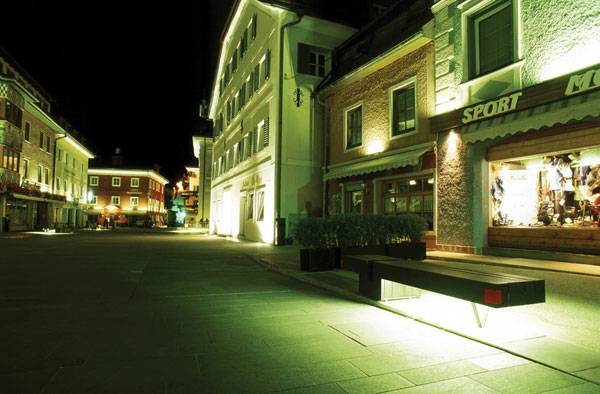
The development of the village centre in Innichen, Italy. Photo courtesy of Alles Wird Gut
This main axis leads the pedestrians to the pathway with a natural circulation to the plaza and different areas within the historic center, like the cathedral or the Museo della Collegiate, which are the highlights of this village. Local materials were used to give a whole new appearance to the project which incorporates perfectly to the historical buildings and surrounding landscapes. The materials used were The materials used were
dark green serpentine (a greenish or brownish mineral, commonly found in serpentine rocks, used as a source of magnesium and asbestos, also as a decorative stone), which resembles the coniferous forest; for the cemented surfaces, local gravel was used, which quite literally represents the surrounding mountains.
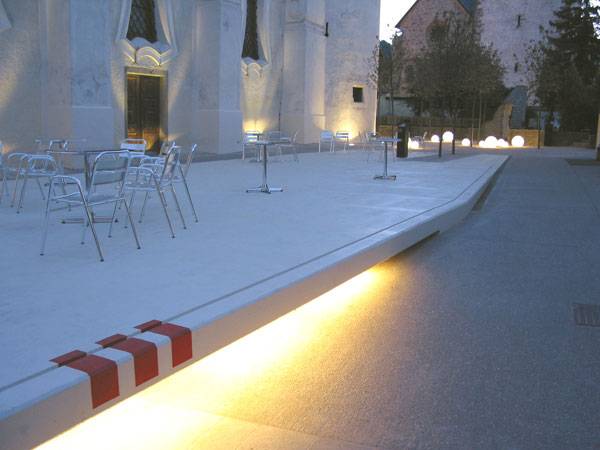
The development of the village centre in Innichen, Italy. Photo courtesy of Alles Wird Gut
These pathways have different textures, giving a special attention to the urban typology, making feel the tourist and the locals like they have traveled in time to the past, simulating how this place looked in ancient times.
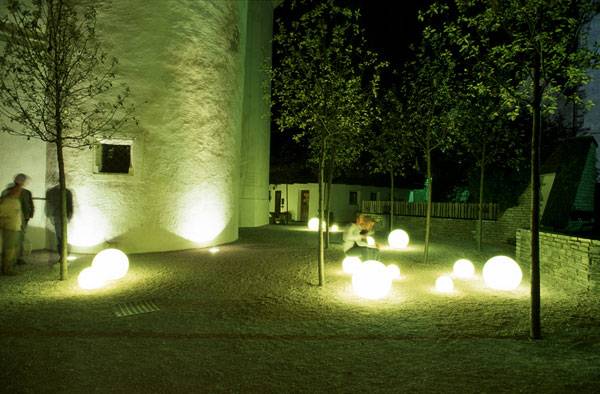
The development of the village centre in Innichen, Italy. Photo courtesy of Alles Wird Gut
There are a number of platforms distributed across the pedestrian street making transitions between different areas. These have a 50cm height, approximately, but to get onto them, people have to walk up ramps which provide easy access. When night comes, these platforms are illuminated, giving the pedestrian a nice ambiance in which to walk. The platforms are mostly used as spaces for social purposes. In many of these, we find chairs for pedestrians who want to rest or drink some coffee.
Reactive Layer This layer has a special arrangement with elements that can be adapted according to particular needs. Some interactive elements are wooden grates, set upon platforms which may be removed and replaced with flower pots. These are supported by lighting elements giving warmth and illumination to the open area. Another interactive element are individual panels which can be flooded, making a game with water features and giving a different aspect to the urban landscape. Visually, these make the open area look bigger when the community is not in peak tourist season.
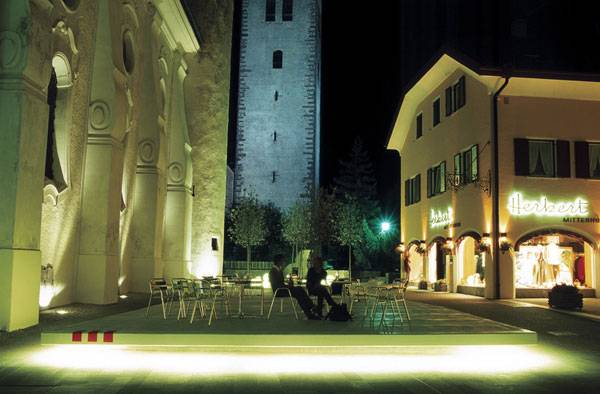
The development of the village centre in Innichen, Italy. Photo courtesy of Alles Wird Gut
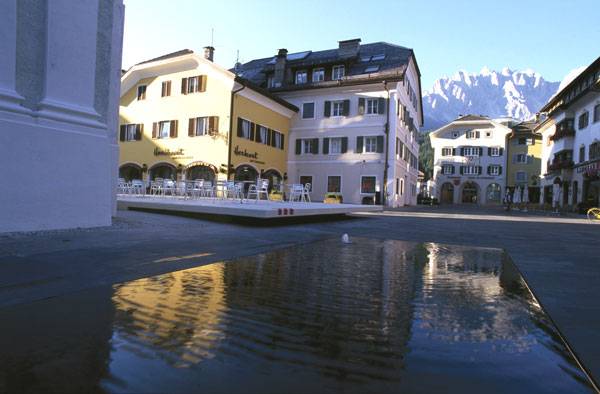
The development of the village centre in Innichen, Italy. Photo courtesy of Alles Wird Gut
There are five green areas distributed across the project. These are the spaces that make the pedestrian street a friendly place to rest and create a relaxing and enjoyable place to rest after a long walk, set up with contemporary urban furniture made of wood and austere vegetation with a few coniferous trees and grasses with pathways with textures such as cement and gravel. As well as the platforms, the benches in this layer also get illuminated when night comes.
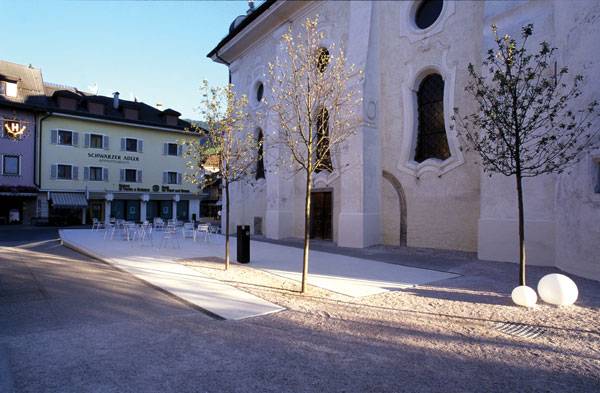
The development of the village centre in Innichen, Italy. Photo courtesy of Alles Wird Gut
The project “San Candido a piedi”, finds better solutions to the pedestrian in public spaces. Creating constant interventions to the city to make it safe, sidewalks and pedestrian paths contribute to pedestrian security. To increase use, numerous notices were created to protect the pedestrian and the cyclist, determining a vehicular speed limit of only 30km/h. In addition, the historic center has allowed only a limited number of vehicles in summer, which guarantees the safety of the local population and tourists. For this, San Candido was granted the WALK SPACE AWARD in 2010.
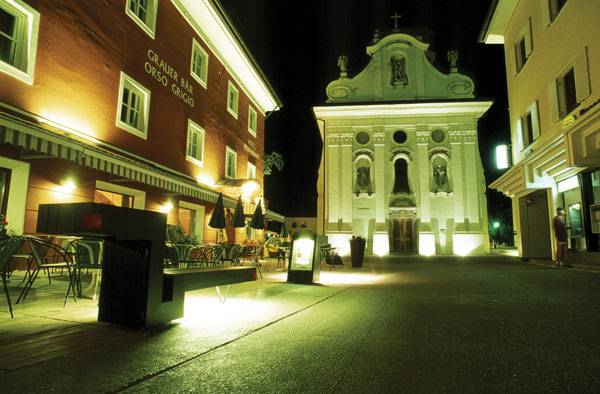
The development of the village centre in Innichen, Italy. Photo courtesy of Alles Wird Gut
San Candido also works to satisfy the needs of the cyclist, making a dedicated cycle lane from different places around the village, including the historic center where points featuring bicycle parking lots are set across the layer. This project gave a new identity to the small but engaging village of San Candido, making it even more attractive to tourists, not just for the majestic surroundings of mountains, meadows and forest, intrepid activities and all amenities, but for this new concept given to the city where the most important thing is not just to give the pedestrian a comfortable and enjoyable place to live, but also safety, and to give all tourists from around the world a nice place to rest and have fun, as a place to remember and to feel a part of San Candido.
As landscape architects, would you convert the old city center of your city into a pedestrian zone? Go to comments 
The development of the village centre in Innichen, Italy. Photo courtesy of Alles Wird Gut
Full Project Credits For The Development of the Village Centre
Project: Development of the Village Centre Location: Innichen, Italy Client: Community of San Candido Area: 6300 m² Construction: 1999-2003 Planning: Alles Wird Gut Recommended Reading:
Article by Miriam Judith González Bolívar
Published in Blog













